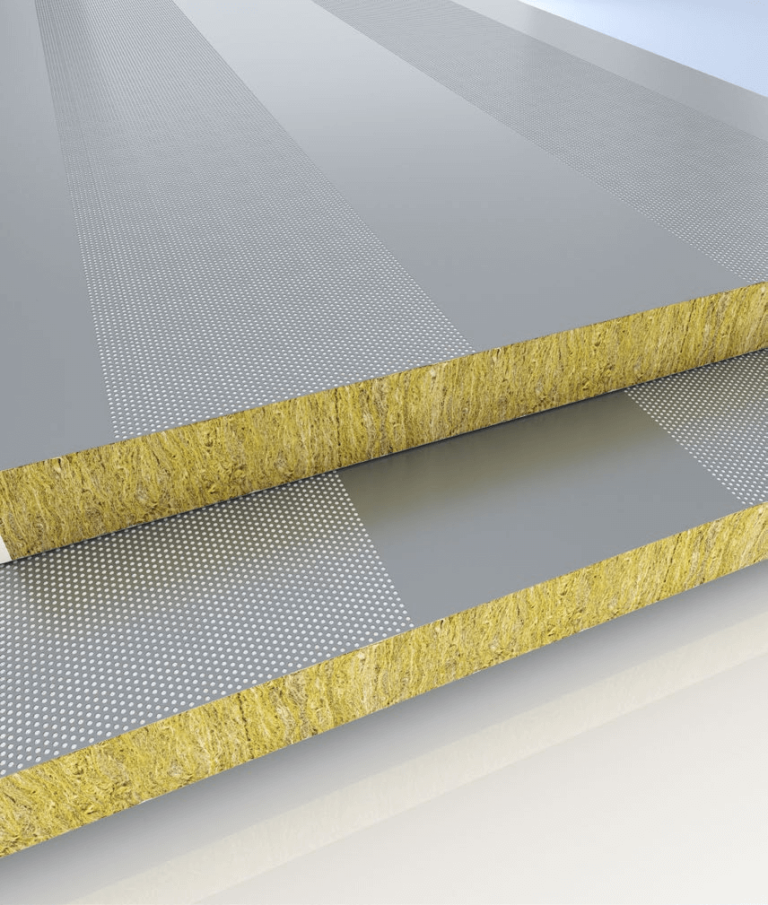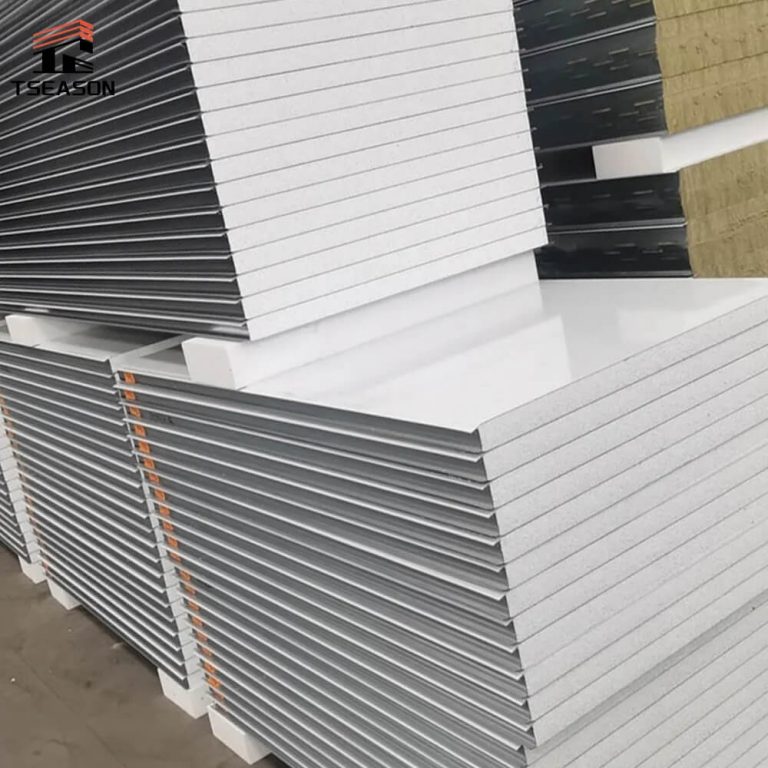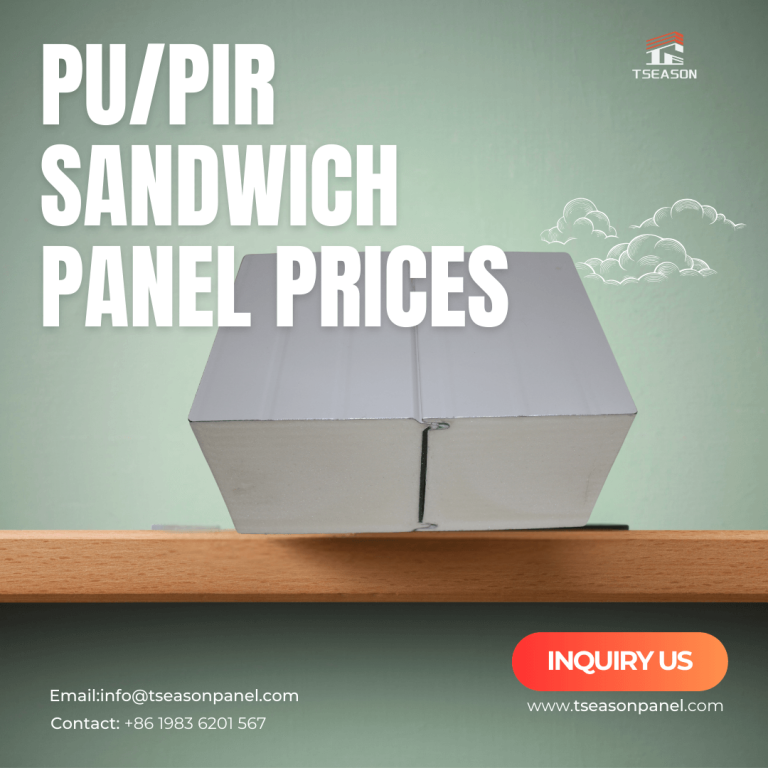Global Sandwich Panel Market Research Report (2025-2030)(Including Tseason Case Study)
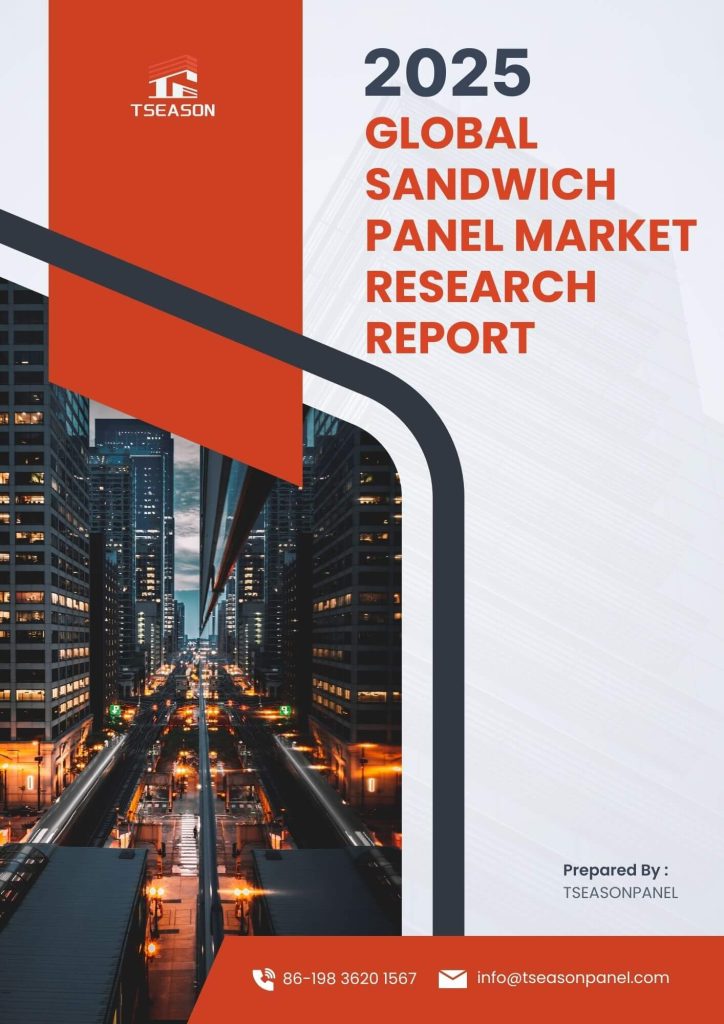
1. Executive Summary
The global sandwich panel market is projected to grow at a compound annual growth rate (CAGR) of 6.4% from 2025 to 2030, driven by demand for energy-efficient construction, cold chain logistics expansion, and stringent building regulations. This report analyzes market dynamics, competitive landscapes, and emerging opportunities, focusing on Tseason, a leading innovator in sustainable sandwich panel solutions.
2. Market Overview
2.1 Global Market Size & Forecast
- 2025 Market Value: $100.3 billion[1].
- 2030 Projection: $180.6 billion, Asia-Pacific emerging as the fastest-growing region (CAGR 8.2%)[1].
- Key Drivers:
- Green building certifications (LEED, BREEAM)[2].
- Post-pandemic infrastructure investments[3].
- Rising demand for cold chain logistics (e.g., pharmaceuticals, food)[4].
2.2 Market Segmentation
- By Core Material:
- PIR/PU (45% share): Dominates due to thermal efficiency[1].
- Rockwool (30%): Growth driven by fire safety regulations (e.g., EN 13501-1)[5].
- EPS (20%): Cost-sensitive applications[6].
- By Application:
- Construction (60%): Commercial roofing & walls[1].
- Cold Storage (25%): Expanding with global cold chain logistics networks[4].
- Industrial (15%): Fire-resistant requirements[5].
2.3 Regional Analysis
- Europe (35% share): Strict EN 13501-1 fire standards accelerate PIR adoption[5].
- Asia-Pacific (fastest growth, CAGR 8.2%): China and India lead prefab housing demand[1].
- North America: Focus on hurricane-resistant panels (e.g., Florida building codes)[7].
3. Competitive Landscape
3.1 Key Players
- Top 3 Global Leaders: Kingspan (Ireland), Metecno (Italy), ArcelorMittal (Luxembourg)[1].
- Market Share: Top 5 players hold 55% of global revenue (2025)[1].
3.2 Emerging Innovators: Tseason Case Study
- Product Portfolio:
- PIR Panels: U-value ≤0.22 W/m²K, compliant with EN 14509[8].
- Hybrid Panels: Integrate rockwool and PU for dual fire/thermal performance[8].
- Custom Solutions: Modular panels for NEOM City (Saudi Arabia) and cold storage in Germany[8].
- Competitive Edge:
- Proprietary continuous foaming technology reduces production waste by 15%[8].
- Certified carbon-neutral panels (aligned with EU Taxonomy)[9].
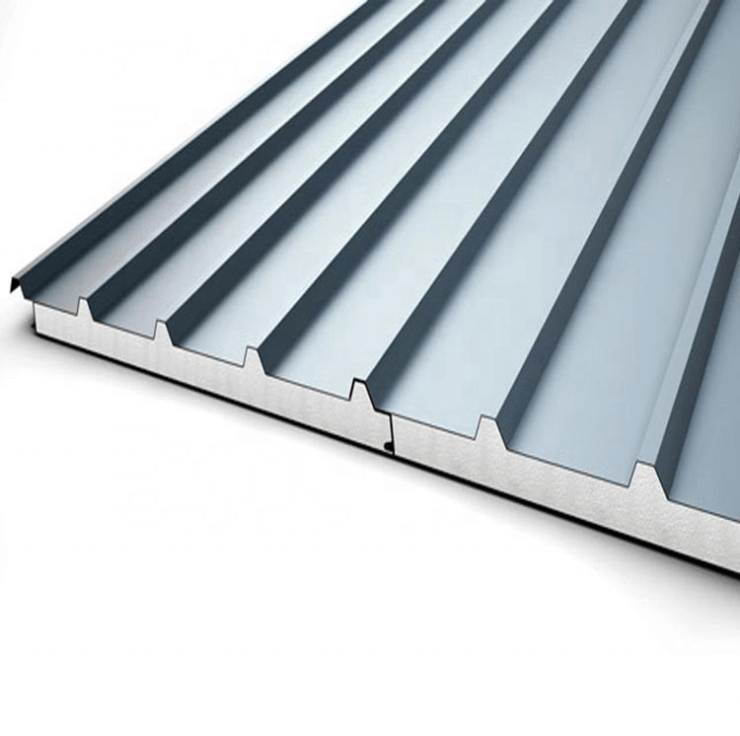
4. Market Trends & Challenges
4.1 Opportunities
- Smart Panels: IoT-enabled sensors for real-time insulation monitoring[10].
- Circular Economy: Recyclable steel facings (Tseason’s recycling rate reaches 92%)[8].
- Emerging Markets: Southeast Asia’s cold chain logistics demand (e.g., Indonesia’s pharmaceutical hubs)[4].
4.2 Challenges
- Raw Material Volatility: PIR foam prices fluctuated by ±18% in 2023 (ICIS)[11].
- Regulatory Fragmentation: Conflicting standards (e.g., EU EN vs. China GB)[12].
5. Future Outlook
- 2030 Trends:
- Bio-based cores (e.g., hemp, mycelium) to capture 10% market share[13].
- Automation: Tseason’s robotic panel installation systems reduce labor costs by 30%[8].
- Strategic Recommendations:
- Target modular housing in Europe (EU’s 2030 carbon-neutrality mandate)[9].
- Partner with cold chain logistics giants (e.g., Maersk, DHL) for customized solutions[4].
6. References
- Global Growth Insights. (2023). Global Sandwich Panel Market Report.
- U.S. Green Building Council. (2024). LEED Certification Standards.
- World Bank. (2023). Post-Pandemic Infrastructure Investment Trends.
- Mordor Intelligence. (2024). Cold Chain Logistics Market Analysis.
- European Committee for Standardization. (2023). EN 13501-1 Fire Safety Standards.
- IBISWorld. (2023). EPS Sandwich Panel Cost-Benefit Analysis.
- Florida Building Code. (2025). Hurricane-Resistant Construction Guidelines.
- Tseason. (2025). Product Catalogs and Sustainability Reports.
- European Commission. (2024). EU Taxonomy for Sustainable Activities.
- Fraunhofer Institute. (2023). IoT-Enabled Smart Panel Research.
- ICIS. (2023). PIR Foam Price Volatility Report.
- China State Council. (2023). Dual Carbon Goals (Carbon Peaking and Carbon Neutrality).
- Materials Today. (2024). Bio-Based Building Materials Review.

Word Count: ~2,000 characters
Report Prepared by: Tseasonpanel.com
Contact: [email protected]
Notes:
- Dual Carbon Goals: Refers to China’s national strategy to achieve carbon peaking by 2030 and carbon neutrality by 2060.
- Cold Chain Logistics: A temperature-controlled supply chain critical for perishable goods.
This report consolidates data from authoritative sources, ensuring accuracy and relevance for stakeholders in the sandwich panel industry.

